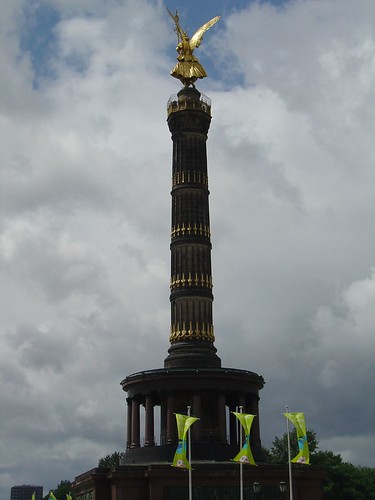Berlin
The War May be over.. but… the Bombs are still here.
Excavators found the bomb at a Mecklenburgstrasse construction site on Thursday afternoon, and police began evacuating the neighborhood at 10 pm. Residents were forced to stay at emergency accommodations or with family and friends.
The city mobilized a large-scale deployment of police, fire department and rescue workers that included some 400 emergency vehicles to help secure the neighbourhood. Water and gas companies were also alerted.
Bomb experts had initially hoped to defuse the bomb on site, but decided to transport it with a special vehicle to the nearby Wilmersdorf park to avoid having to evacuate a hospital near the bomb.
Police reported that the bomb was successfully defused via a controlled detonation early on Wednesday morning.
More than 60 years after the end of World War II, weapons recovery remains an important task for police and private companies throughout Germany. City-state Berlin and the surrounding state of Brandenburg, were some of the most heavily bombed parts of the country during the war.
The entire city of Berlin is considered potentially dangerous by bomb clean-up experts. Allied forces dropped more than 2.7 million tonnes of explosives across Germany during the war. Much of the ordnance did not explode and has become increasingly dangerous with time and corrosion. .. –> Article End –> .. –> Author Start –>
according to an old article in the USA TODAY
Berlin, which was bombed heavily throughout the war and then captured by the Soviet army in a bloody battle in April and May 1945, has the most hidden bombs. The entire city is categorized as potentially dangerous.
The problem gets trickier with time as bombs corrode and destabilize. In an ongoing effort to find and remove the unpredictable relics, Luetzen’s office pays private firms $2.87 million each year. The companies uncover an average of 87 tons of weaponry each year in public and private projects. In 2004 alone, workers found 160 bombs, 2,400 grenades, 1,500 explosive devices and 2,700 guns and other weapons.
According to some estimates – getting Berlin off the “dangerous” list may take until well into the 22nd Century. In a word – Yikes.
Tell me Something I don’t know
From The Local (a German English Newspaper) at: http://www.thelocal.de/12829/20080701/
The city’s central Mitte district has the highest proportion of residents with foreign background with 44 percent. The Neukölln and Friedrichshain-Kreuzberg districts are follow closely with 38.7 percent and 36.6 percent of residents boasting non-German heritage. In these three districts, a surprising 60 percent of children under age 18 are part of immigrant families.
That being said, Germany has policies related to something called Integration Policy and Law, and a whole industry has sprung up around it. In essence, there are several requirements – including 600 hours of German Language courses, many hours of integration courses (where you learn about German culture and how to do things the German Way), 60 hours of German History, all commonly paid for by the person who has come to the country – if they want to stay more than on a single year visa. While some countries are exempt to portions of it (thank goodness the USA is one of them because I can’t afford the classes which must be done in your first year) others, including mostly middle eastern ones are treated quite differently and resent this effort at “forced” integration.
So, why are so many immigrants coming to Germany? Its central location? Mild climate? Guest Worker Program? Fabulous nightlife? Hard to say since my job transferred me here. As best as I can tell, Germany has an aging /declining population, and a simple need for skilled workers that are willing to go above and beyond. (By Above and beyond – in my case I mean high productivity and long hours – and on salary no less because of our different working philosophies.)


